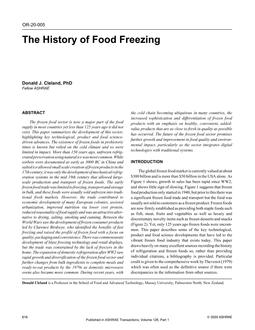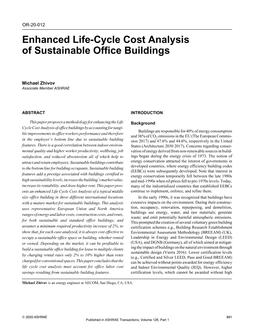The frozen food sector is now a major part of the food supply in most countries yet less than 125 years ago it did not exist. This paper summarizes the development of this sector, highlighting key technological, product and food sciencedriven advances. The existence of frozen foods in prehistoric times is known but relied on the cold climate and so were limited in impact. More than 150 years ago, unfrozen refrigerated preservation using natural ice was most common. While sorbets were documented as early as 3000 BC in China and salted ice allowed small scale creation of frozen products in the17th century, it was only the development of mechanical refrigeration systems in the mid 19th century that allowed largescale production and transport of frozen foods. The early frozen food trade was limited to freezing, transport and storage in bulk, and these foods were usually sold unfrozen into traditional fresh markets. However, the trade contributed to economic development of many European colonies, assisted urbanization, improved nutrition via lower cost protein, reduced seasonality of food supply and was an attractive alternativeto drying, salting, smoking and canning. Between theWorld Wars saw the development of frozen consumer productsled by Clarence Birdseye, who identified the benefits of fast freezing and raised the profile of frozen food with a focus on quality, packaging and convenience. There was commensurate development of blast freezing technology and retail displays, but the trade was constrained by the lack of freezers in the home. The expansion of domestic refrigeration after WW2 sawrapid growth and diversification of the frozen food sector andfurther changes from bulk ingredients to complete meals andready-to-eat products by the 1970s as domestic microwaveovens also became more common. During recent years, withthe cold chain becoming ubiquitous in many countries, theincreased sophistication and differentiation of frozen foodproducts with an emphasis on healthy, convenient, added valueproducts that are as close to fresh in quality as possiblehas occurred. The future of the frozen food sector promisesfurther growth and improvement in food quality and environmentalimpact, particularly as the sector integrates digitaltechnologies with traditional systems.
Citation: 2020 Winter Conference, Orlando, FL Technical Papers









